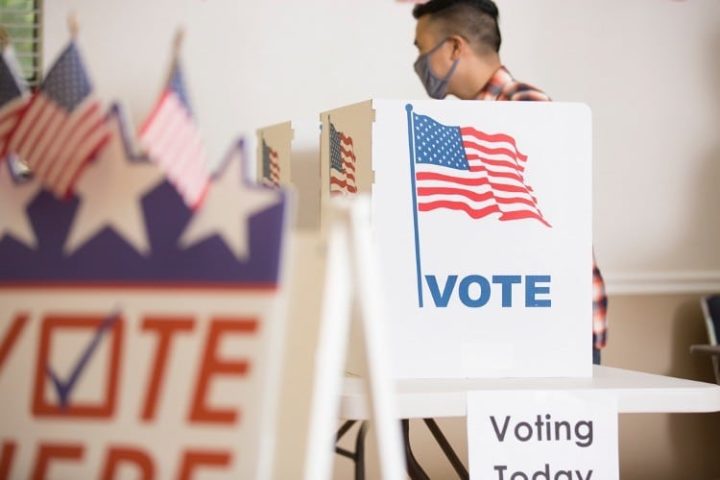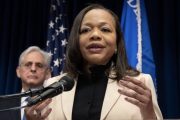
In four days, the votes of Californians will decide the political fate of embattled Governor Gavin Newsom. Whether the Democratic leader is ousted owing to his draconian coronavirus policies and the state’s rising homelessness and crime rates and replaced by a Republican candidate such as front-runner Larry Elder will be determined by the integrity of the September 14 special recall election, as recent polls suggest the race will be won by narrow margins.
On Wednesday, California native and Vice President Kamala Harris visited the Golden State to campaign for Newsom, praising him as a “great American leader.” The same day, former President Barack Obama dropped a TV ad targeting undecided Californians, urging them to vote “no in the Republican Recall.” Yet Obama’s focus on the falsehood of Republicans as the instigators of the recall greatly diminishes the extraordinary grassroots efforts that made the election possible in the first place.
These efforts were led predominantly by middle-aged women across party lines, who stood for hours outside Vons, Ralphs, and other grocery stores and restaurants and businesses, collecting nearly two million signatures needed to fulfill the recall requirements, informing residents that Newsom can be recalled, while calling for community support to get the job done.
Why will the recall be won or lost by the narrowest of margins? The glaring factor is voter fraud, as millions of ballots have been mailed to California residents, who can download and print their ballots online. This continued potential for enormous voter fraud threatens to stifle the will of the people of California. Moreover, ongoing analyses of voting irregularities found in the 2020 election suggest fraud continues to plague every important election in America. The disastrous national consequences of these anomalies, should they not be fixed, will persist until election integrity is the priority of the process.
Thus, concerned citizens in Arizona continue their quest to resolve the fraud committed in 2020. Across the state, a grassroots voter-canvassing effort has been underway since December. On Wednesday, Liz Harris, a onetime candidate for the Arizona House of Representatives and member of a patriot group unaffiliated with either the Maricopa County forensic audit or the Arizona Senate audit, reported to Steve Bannon’s War Room that in Maricopa County, “34.23 percent of people who were recorded with no vote said they had voted [i.e., “lost votes”], and 96,389 votes were from addresses where mail-in ballots could not have possibly been cast by the person to whom that vote was registered.”
Bannon, echoing former assistant to president Donald Trump Peter Navarro’s dictum that “it’s the canvass, not the count,” reminded his program’s listeners that “a full forensic audit is tripartite. You have the ballots and the ballot analysis and the recount of the ballots…. The third part has to be a canvass.”
In May, Department of Justice (DOJ) principal deputy assistant attorney general in the Civil Rights Division Pamela Karlan sent a letter to Arizona Senate President Karen Fann addressing the DOJ’s concerns about the Republican-led audit in her state, accusing Fann of “potential non-compliance with federal laws enforced by the Department.”
The DOJ letter raised issues regarding the preservation and retention of election records under review by Maricopa auditors and claimed inadequate safeguards were in place to protect those records. The letter also noted the potential for voter intimidation should auditors conduct a canvass to collect data about voter registration, including door-knocking to verify a voter’s address.
Not to be intimidated by the DOJ’s threats, Harris and other concerned citizens set out to canvass a huge area comprising three Maricopa County precincts. Notably, Maricopa County is the fourth-largest in the nation by population and has more than two million registered voters. Harris told Bannon that, together with other volunteers, she went to the homes of registered voters and asked these basic questions:
- What method did you use to vote?
- Did you receive extra ballots?
- What did you do with those extra ballots?
- How many registered voters are supposed to be here, and how many actually voted?
Upon completion of their investigation, the group reported an astonishing “173,104 lost votes and 96,389 ghost votes.”
“Nine out of ten people thanked us for coming to their door,” said Harris. “The equivalent of the people we interviewed was larger than an average American city…. We canvassed all registered voters. We didn’t just go to the official record.”
The attempt to canvass all two million-plus registered voters in Maricopa County is a huge undertaking, and the effort should be applauded. However, the manpower required to complete such a task is extensive and demands a professional team of auditors to ensure the integrity of the project.
“People have to understand,” said Bannon, “this is about a line of inquiry. Is this imperfect? Absolutely it’s imperfect; Liz Harris is not saying it’s perfect. But it shows you directionally a line of inquiry that must be and will be drilled down on. We’re going to have canvasses and it’s going to blow the Left’s head up!” (Video of interview below.)




